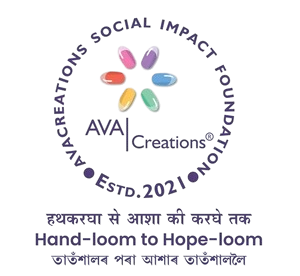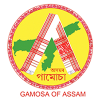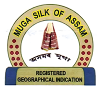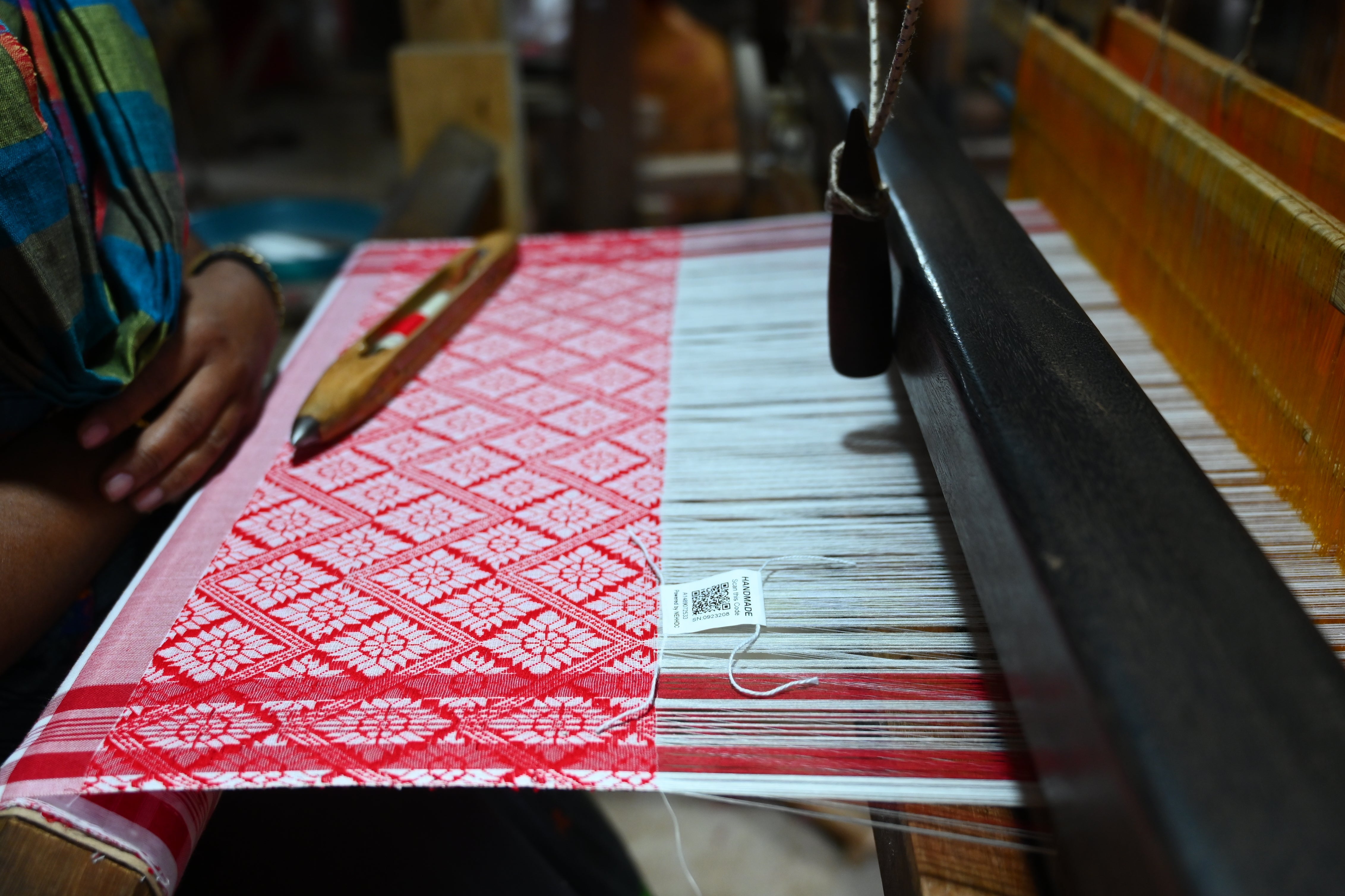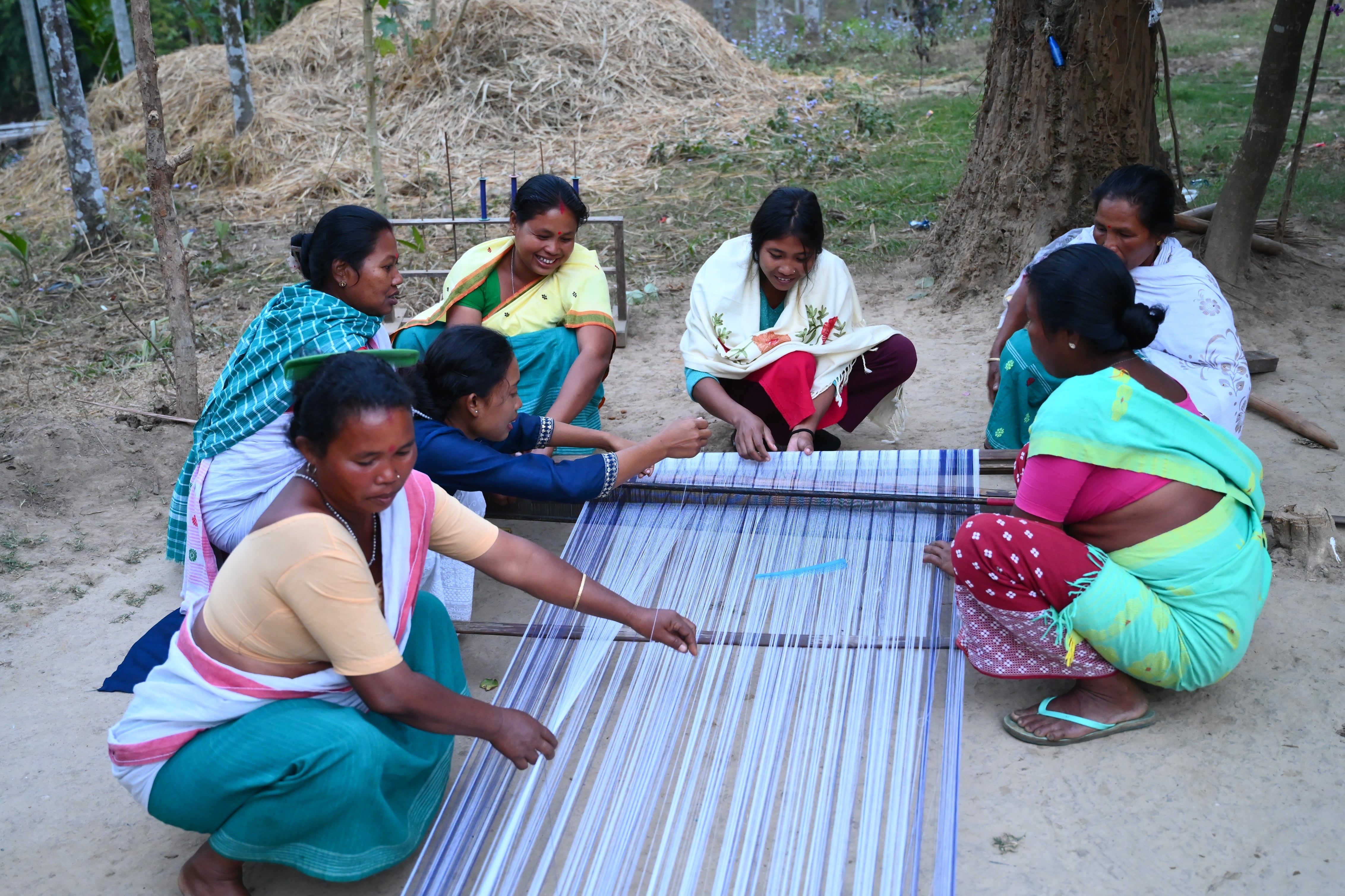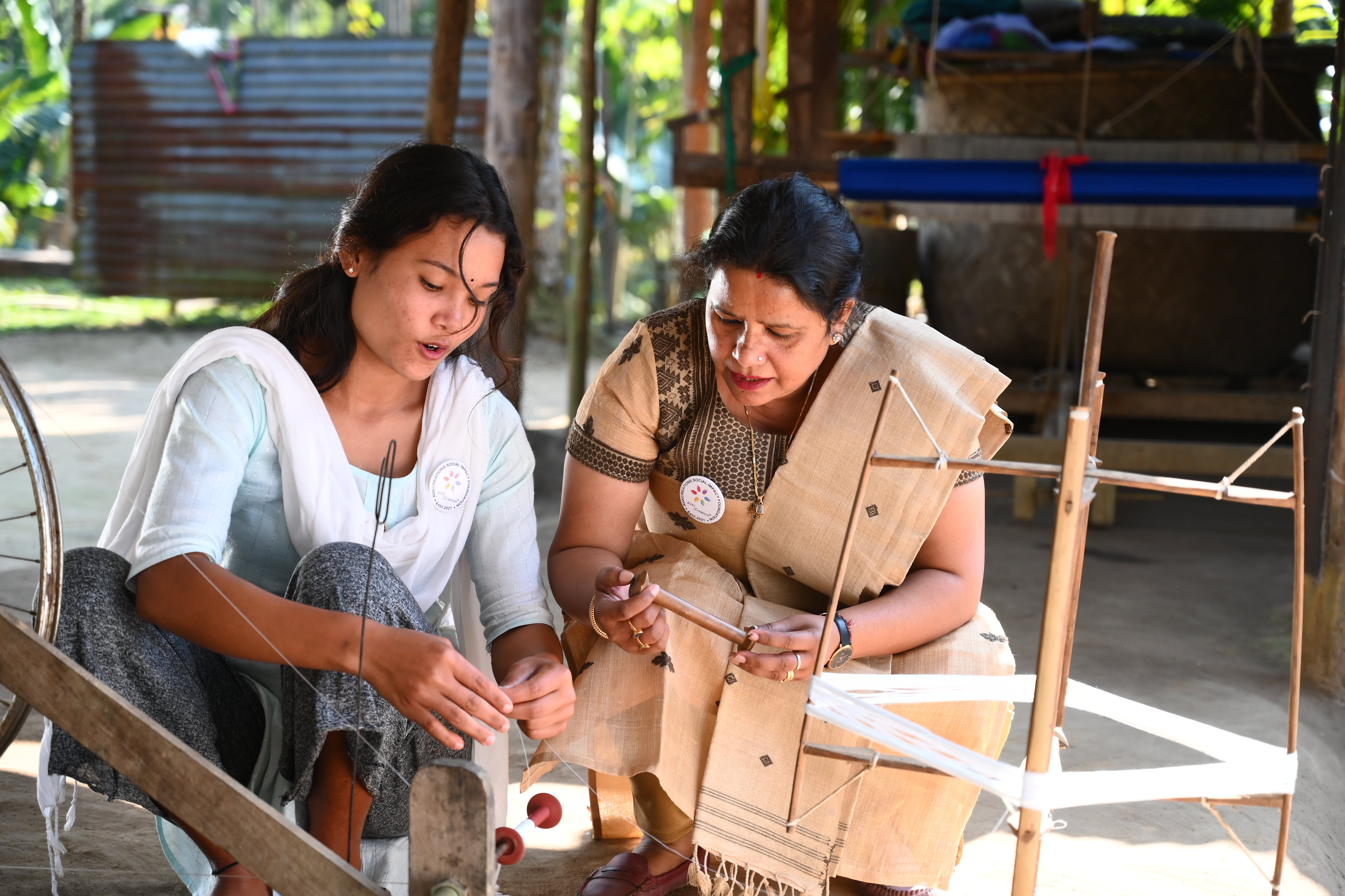
Crafting Connections: The Social Impact of Handcrafted Handloom
In today’s technologically driven society handloom reminds us of our roots, honesty and the people who still weave them. Every single garment has a message imprinted on it, of mastery, hours spent and commitment. From the glorious Assam silk Saree to the sophisticated mekhela chadar, it forms connections in between the tradition and mankind. Besides the beauty in every woman aspect, it influences lives even under groups such as the AVA Creation Social Impact Foundation, which focuses on handloom to support the community.
How can hand crafted Handloom Weaves not just threads but lives and legacy?
It can thus be concluded that tradition empowers concretization.
The handloom products have been an essential pillar of Indian civilisation and economy right from time immemorial. For places such as Assam it has a much richer meaning. Handmade textile fabrics are produced from small artisans and even whole villages depend on textile fabrics.
Economic Upliftment: Problem handloom helps thousands of artisan families with fair wages and stable employment.
Women Empowerment: In many villages we can see the women folk are the ones who do weaving mainly. Such NGOs like AVA Creation Social Impact Foundation offer appropriate training; women then can sustain themselves and be empowered to be independent.
Cultural Revival: Just the way mekhela chadar, Gamosa and stoles sustain, the weaving techniques are handed down from generations.
When Supportive of Handlooms: A Web of Interconnectedness
When you buy a silk sari or a handcrafted shawl, you support:
Rural Development: It infuses money back to education, health and better standard of living of artisans.
Cultural Continuity: This guarantees the conservation of traditional weaving methods since every sale is made.
Social Harmony: The craftsmanship of handloom weaving makes the industry cohesive with whole towns involved.
AVA Creation: A Mission of Social Impact
What AVA Creation Social Impact Foundation does is much more than create textiles in its initiatives. It actively uplifts communities by:
- Of course, paying artisans reasonable wages which are equivalent to the value of the work they provide.
- Organizing training sessions, knowledge-building sessions focusing on women.
- Sensitizing the dorsal community to newer techniques of weaving that are in consonance with the sustainable endeavors.
It is that commitment that changes lives so that artisans not only have a livelihood, but they prosper.
The Economic Empowerment of Women through Handloom Sector:
We consider that craft-making acts as an empowering tool especially for women and in the rural areas of India. Here's how handcrafted textiles uplift them:
1. Financial Independence: Wearing from weavings also ensure that women become a source of income to the household.
2. Leadership Opportunities: Most women come to empower cooperatives and conduct collectible design programs.
3. Confidence and Dignity: It is a matter of great pride that one is a creator of beautiful things like the textiles in question.
Social Equity as a Business Value Proposition for Ethical Practice:
Unlike exploitative fast fashion, the handcrafted handloom industry prioritises ethics:
Fair Compensation: Workers, especially artisans are paid according to the effort they put in and the skill they display at the workplace.
Inclusive Growth: The industry engages the usually ignored people, and this affords all people a chance.
Eco-Social Balance: As a result of embracing natural fibres and competent processes of production, handloom promotes both people and the environment.
Role of Handloom in Today’s Global Market:
Today’s consumer looks for something real and this has led to the world looking for handmade products.
1.Cultural Significance: Customers appreciate art pieces and that is why they want to know more about them.
2.Aesthetic Appeal: This makes attractive styles of silk sarees and colourful mekhela chadors that suit both traditional and modern flavour.
3.Growing Consciousness: Knowledge and consciousness about fair-trade and ethical fashion help the cause of handloom.
Conclusion:
Handloom therefore goes beyond the aesthetic, it’s sustenance for communities, heritage, and social exclusion. When you finance this craft, you link yourself into a tapestry of empowering and sustaining people. AVA Creation Social Impact Foundation fits this mission because every thread counts. The Foundation of Good Retail practices.
People should opt for handloom and build relationships as lasting as the handloom products they make.
